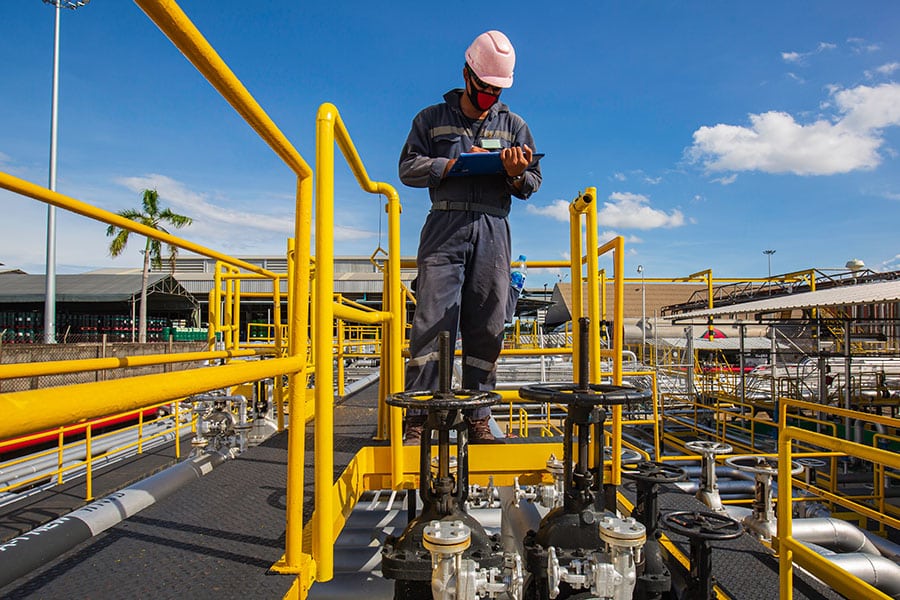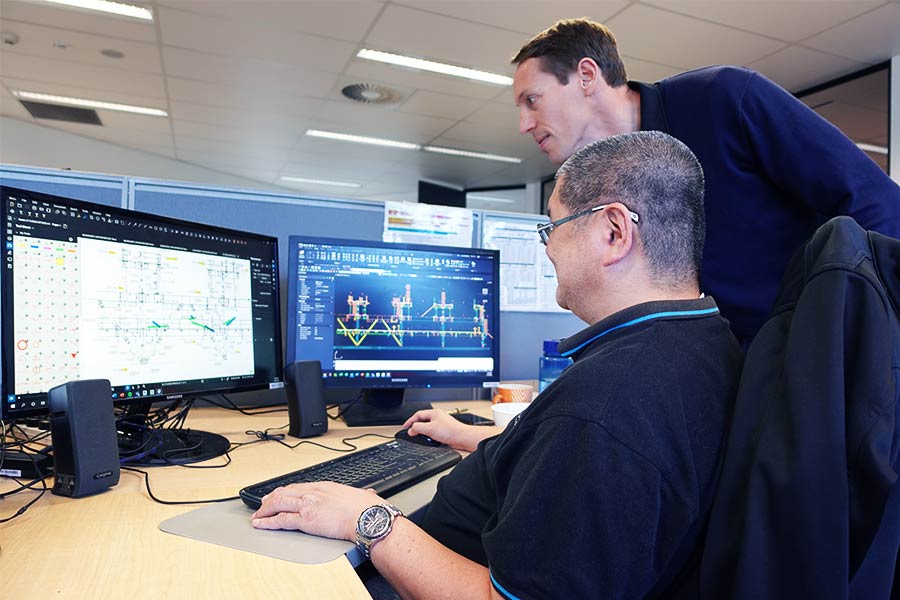The fine balance between adequate staffing levels, meeting business demands and optimising your resources across Australia’s construction industry has never been more challenging.
Conversely, thanks to emergent technologies, never has there been such an opportunity for optimising a reconfigured workforce and business model. Federal, state, territory and local governments are announcing unprecedented investments in development and construction projects across Australia, from gas and hydrogen multi-billion-dollar precincts to residential and commercial developments, to Olympic and other nation-building investments.
Meanwhile, supply chains continue to face disruption, workforce challenges are continuing to impact scope creep and project delivery, and profit margins are dissolving at light speed. People are the most critical asset in any business—their performance can make or break your reputation—not only costing or impacting the project at hand, but contracts into the future as well.
How does a construction company build a reliable workforce that is sufficient to respond to market demand, with appropriate skills and while also protecting the bottom line? At the same time, how do you streamline processes, protect your supply chain and optimise resources to ensure your project pipeline delivers quality work on time and within budget?
In this guide we walk you through how to build an agile workforce and business model that best meets the needs of your construction business.
What makes a construction business lean and agile?
A project management approach built to optimise value and reduce waste, lean construction aims to reduce risk, improve outcomes and create a functional flow of work. Improved performance of people and resources reduces overproduction and ensures cost control and safety.
Project pipeline
Your project pipeline includes more than just work underway—it also includes projects that are locked in within the next few years, alongside those you have bid for or intend to develop a proposal to deliver.
Completed projects are also in the pipeline. Their records and applicable learning points help form improved ways of working on current and future projects.
Your pipeline of work should be central in planning your workforce. This means you need to understand current, upcoming and planned projects and the requirements of each.
Unpacking requirements for upcoming jobs often means project managers are working to ensure the right equipment and materials are sourced to ensure the job keeps progressing on time. However, it’s even more important to analyse the skills required for each job—and your project pipeline is the opportunity to do this strategically and future-proof your scope management.
Construction workforce planning
Workforce planning is a critical tool in ensuring you are making the best use of your people—getting the right people into the right roles at the right time. The workforce plan identifies how your current and future workforce needs will be delivered—from role to be recruited, training and development requirements to deliver roles, opportunities to combine roles and where niche requirements may be best delivered through subcontractors or other business partners.
Your workforce plan begins with understanding your project pipeline—including existing, short-term, long term and forecast projects.
Other steps in your planning process include:
- Mapping the roles and skills required to deliver your project pipeline
- Matching existing people with the right skills and experience to roles required
- Identifying where in the project pipeline you have insufficient people or skills
- Developing a strategy to bridge the gap that may include recruitment, development of existing staff or expanding the roles of people to encompass greater diversity in tasks
- Partnering with other organisations or contractors to share specialist resources
Skills gap analysis
Different projects require different skills—and in a number of projects similar skills sets can be broadened to enable fewer workers on site—and ensuring their time in delivering the work is maximised.
Well before a project begins the project manager should review the skills required to get the job done—matching work packages to your workforce. Undertaking this assessment in advance means you have the time to identify gaps to either upskill or recruit to bolster skilled workers on the ground. Where it’s difficult to fill gaps, consider diversifying the roles of existing people or subcontracting for niche requirements.
If your employees are reliable, hardworking and loyal, you should always look to develop their skills before hiring from the outside.
Your construction business should also future-proof your workforce through partnerships with training providers—building an ongoing funnel of trainees and apprentices. Set up apprenticeships with students where they can spend time both in and out of school learning technical skills that are applicable in the world of construction.
Succession planning
According to construction recruitment specialists Construction People, about 4 in 10 workers plan to leave their employers within the next year.
And often, those workers who are exiting the business take with them important experience and business intelligence.
Future-proof your workforce and important expertise by identifying potential replacements for key roles and developing these people to step into these gaps.
Succession planning is the process of finding backups for key positions in case a manager or executive leaves. It’s about ensuring that if option A doesn’t pan out, there’s a backup plan in place. Any good template includes these core aspects of the succession planning process:
- A list of current business partners and potential replacements
- Key skills that each senior role requires
- Level of training and/or experience of the candidates
- Short-term and long-term cover for senior roles
- The amount of time it’d take to onboard a candidate for an existing position
The information you record in the succession plan will determine who is the right fit for each critical role in your company.
Succession planning principles apply not only in future-proofing your workforce; it is also a tool that can be used to ensure your supply chain and materials and equipment.
Subcontracting
Specialist and uncommon tasks may warrant an out-of-house investment. Build a stable of subcontractors who can be drawn on to manage these specific pieces of work—meaning your business is streamlining and optimising your people resources while also saving money.
Build a stable of expert subcontractors in partnership with peer businesses across the supply chain and you will be able to build loyalty and enhance both quality and production of outputs.
Materials and equipment
Stock control—managing the flow of stock and materials to meet the needs of projects in a cost-effective manner—is central to driving a lean and agile business.
While just-in-time stock control has commonly been used across the construction sector for decades, the COVID-19 pandemic and global unrest have highlighted supply chain dependencies and deficiencies.
How do you ensure your pipeline of projects and their delivery is protected? A few simple steps will ensure your work is not delayed:
- Diversify your supply chain—consider both onshore and offshore distributors
- Pre-order or bulk order common products
- Consider the value in developing your own manufacturing arm (link to Eve Workwear Blog)
- Source alternative products and materials
- Partner with other businesses in your network to share resources and reduce risk
Circular economy principles in lean companies
Circular management focuses on reducing waste and reusing products and materials. Strategies such as building a supply chain of recycled materials not only help protect and optimise your workflow, but they may also offer opportunities to enhance your position as a lean and agile business.
Stagger arrival of products and materials to match work packages, reducing the risk of damage and theft while also protecting workflow.
Partner with peer organisations to share equipment and resources that may only be required on occasion.
Use technology to automate workflows and improve project accuracy
Technology ties all aspects of your construction business together—streamlining processes and information, offering real-time information and improving accuracy and performance.
Through tools such as Bluebeam Revu your lean construction business can further streamline operations by:
- Form cross-functional teams who can each collaborate virtually with current technical documents and details
- Use cloud-based technology to manage the complete project lifecycle
- Manage and implement changes in real time to ensure all project team members are responding to changes as the project progresses
















